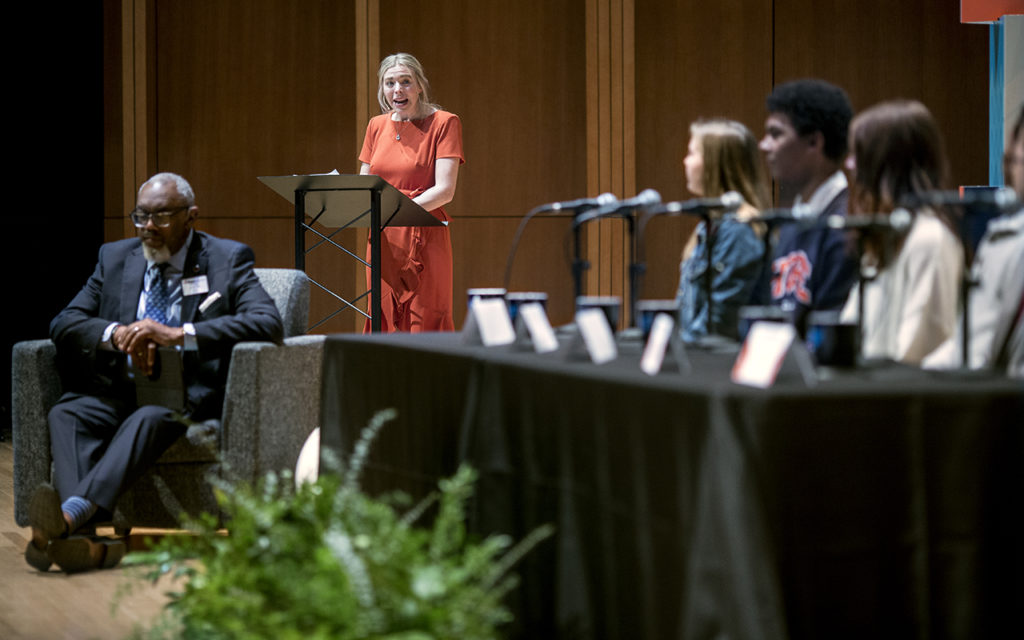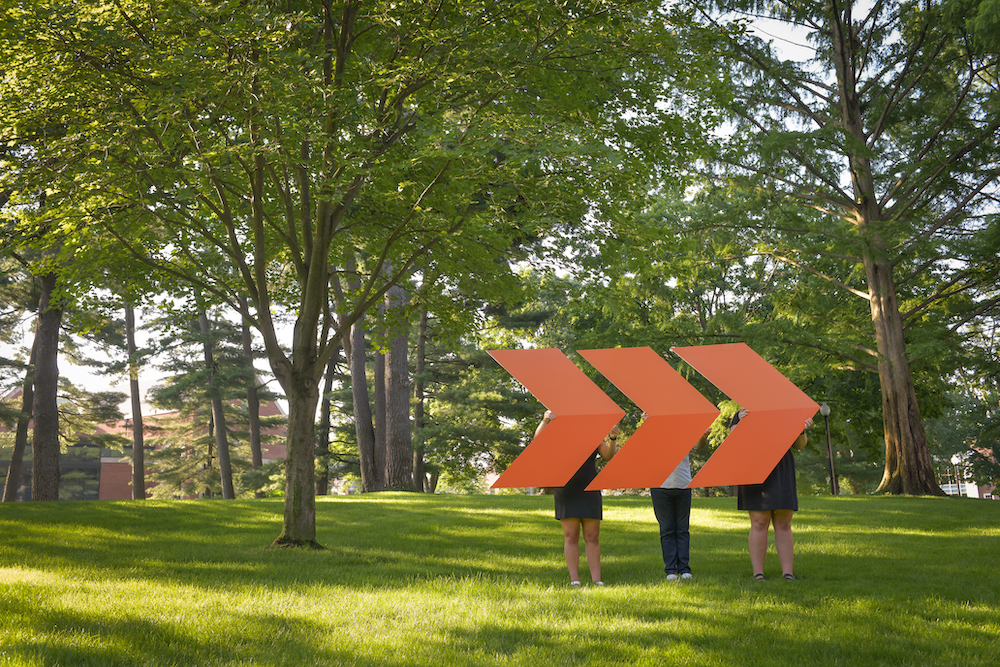
An Introduction to the Hope Forward Student Panel at the Catalyst Summit on the campus of Hope College, March 9, 2023.
We are all here today to learn from the true stars and experts, our students, so I want to maximize our time with them today, but I’d first like to share just a little bit about the Hope Forward vision and the student cohort experience.
As you heard time and time again today, higher education has a problem. So right now, 48 million Americans share a student debt load of $1.75 trillion, and it’s only trending worse.
We see financial barriers and the rising tuition costs not only influencing a student’s decision of where they attend college, but should they even attend at all.
A recent study from the Gates Foundation found that 40 percent of students who choose not to attend college do so solely because of the cost. This is millions of young talent.
We then also see this impact on college enrollment that is steadily declining, causing colleges and universities that have been around more than a hundred years, to close their doors at the fastest rate to date.
We have a problem. And if we want a different outcome, then we need to do something differently. And Hope College is raising their hand and saying: We have this idea. We want to do something different; and that something different is Hope Forward.
Hope Forward is a pay-it-forward — or as I like to call it, a give-it-forward tuition model. And, we’re piloting this right now on our campus.
We have 58 Hope Forward students who are receiving their education fully funded through the generosity of others.
They’re spending their years preparing for a life of impact rooted in gratitude and generosity. And then they, in turn, have committed to annual generous giving back to Hope after they graduate so that future generations can have the same transformational opportunity.
Something that I love about the Hope Forward application process is that it’s not based on merit and it’s not based on financial need. Instead, students are invited to describe an area of hopelessness that they see in their life, their community or the world, and then tell how they would want to bring it hope.
The interview prompt asks students to consider hopelessness and the hope that they want to bring.
So just a few examples:
– One of our sophomores has an idea to develop affordable housing in our nation’s capital with hopes to attract and retain diverse populations and government.
– Another has an idea for an easy-to-use app for children in the foster care system to privately and securely report their well-being.
-And another, he wants to be a chiropractor to care for those in labor-intensive positions without easy access to affordable healthcare.
Our 58 amazing students represent 11 different countries and 19 U.S. states. They’re a diverse group in every sense: various identities, experiences, perspectives, passions, goals and ambitions. They’re studying to be physicians, physicists, social workers, researchers, nurses, teachers, therapists, artists, nurses, business leaders and accountants, and so much more. Our students are shaping our future. They are our future. And can I tell you? Our future looks bright.
What if our colleges and our universities not only provided an accessible education for these students and countless others just like them, but also prepared them to run fearlessly and uninhibited toward a hurting world? Hope Forward breaks the cycle of debt and loans, and instead prepares students for a lifetime of giving.
Giving their talent, giving it forward, so that future generations can have the same opportunity. In a nutshell, it’s a move from scarcity to abundance.
We are almost two years into this pilot and we’re learning a lot. The headlines are: We’re seeing interest; we’re seeing impact; and we’re seeing investment.
We’re seeing the interest in this model from students and their families alike. We’re also seeing the impact that it’s having on learning. Instead of working countless jobs over the nights and weekends and summers, our students get to learn.
In fact, 95 percent of our students are involved in co-curriculars like leading student organizations, meaningful internships in and around the community, and/or conducting research with faculty — all of which are high-impact practices that elevate classroom learning.
And we’re seeing investment from the students.
The cohort came in with an average or about slightly below average GPA compared to their peers; and yet, after one year of Hope Forward, their GPAs have risen above the rest. And all of our 58 students who started Hope have stayed at Hope, giving us a hundred percent persistence and retention rate.
With excellent academics here at Hope and strong campus partnerships, we (many of whom are in this room today) are all-in on our mission to prepare students for lives of leadership and service in a global society. And Hope Forward elevates this mission.
What better way to lead and to serve globally than to give and impact generations to come? See, Hope Forward makes us more of who we already are. And generous hearts and generous minds change people, and people change the world.
I know I speak for my colleagues when I say that this vision gets us out of bed every single day. All of us work together alongside Erin and our integrative learning team led by Casey Stevens, and then our Hope Forward Program Advisory Board, both current and former members.
See, we get to help students develop virtues like gratitude and generosity, curiosity and hope. We do this through integrated and applied learning paired with habitual practice.
If you know me, I often refer to virtue development like a muscle. So, the cohort student experience is not a crash diet or a crash course. Instead, it’s practiced over and again through habitual practice.
This is so that students get to graduate being generous, grateful and hopeful as they enter their workplaces, their neighborhoods, their families, their places of worship and their communities. So without further ado, let’s get to the magic.


